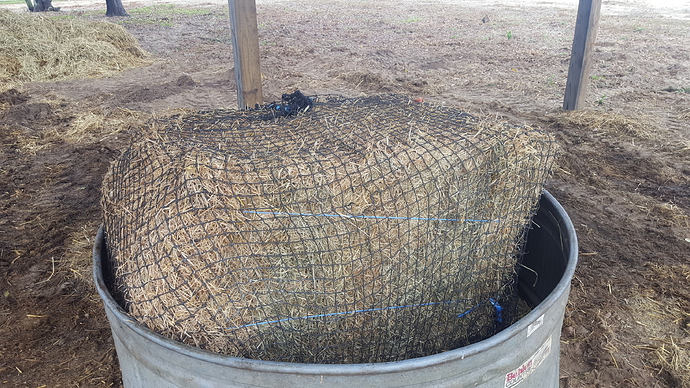There are also recorded instances where hay nets hung higher, where horses have to twist head and neck to pull in odd angles, have been known to cause some stiff and sore horses over time.
We have always fed on the ground and last decades on regularly swept rubber mats.
We also only fed what will be eaten right then, where there is no left by next feeding.
How much waste depends on the hay, alfalfa has hardly any waste, is all good, some grass hays of poorer quality may have horses waste more, just would have to clean more often.
Even in stalls, one corner swept out for hay, works well, but we have larger stalls and communal runs under roof for several horses.
Serious advantages of feeding on the ground are horse’s health, eating with heads down encourages draining of head and lungs.
Feeding above withers like in higher feeders or hanging nets may cause runny eyes and noses, more hay and hay dust getting in there as they pull and eat, especially where is windy.
We had the rare horse that had neck or back problems, could not lower head, injured or maybe a reaction to a vaccine and had to drink and eat at extended head height.
Those we put in a pen by themselves and fed off something at their height until well.
As always, no rules of thumbs, each horse managed however is best for that horse at that time, never say never.





